Ryan Hall's Blog, page 354
September 9, 2015
Out There: Back to School

Photo: Shutterstock.com
I used to be that kid every fall—the one who became irrationally excited about going back to school each year. While other kids were playing kickball and building forts, I was stockpiling No. 2 pencils and practicing the fine art of removing perfectly straight pages from perforated notebooks.
Yes, I was a geek. Still am, actually. Though I no longer have firsthand experience the joy of an annual Trapper Keeper purchase, the stoke factor is high as I live vicariously through my nieces and nephews in their own back-to-school experiences. (They do not feel the same way about Aunt Susan and her irrational enthusiasm for old-timey words like “Trapper Keeper.”)
In fact, I’m so excited, I’ve been practicing my math skills using running-themed word problems in anticipation of the inevitable homework about to come my—I mean, their—way. Sharpen your brain and your No. 2 pencil—it’s back to school with running math! Go ahead, solve for X:
Q: Alex loves running hill repeats! This week, she did 10 repeats on a 70-meter hill with a constant 8 percent grade. What is the total elevation gain of Alex’s workout?
A: This is a trick question. Nobody loves hill repeats. Alex is a liar.
Q: After the final 20-mile training run of their marathon training, Karen and Jason decide to go out for post-run brunch. While Karen is not looking, Jason steals one of Karen’s four chocolate chip pancakes. How many pancakes does Karen have left?
A: Four pancakes and a Jason with a stab wound. Jason should have ordered his own damn pancakes.
Q: Heidi has a plan to start her 10K race conservatively, then increase her pace by 10 seconds per mile with each passing mile. If Heidi begins at a pace of 9 minutes per mile, what will be her pace at mile 4?
A: Zero minutes per mile, because Heidi ran into someone who stopped short to take a selfie at the Mile 4 marker.
Q: Your favorite running shoes are on sale at your local running store for $39.99 per pair. If sales tax in your state is 7 percent, how many pairs in total can you buy with $300?
A: Wait, wait…there’s a running store that sells shoes for $39.99? For both of them? Why are you standing around doing math? Go! GO! Buy them all!
Q: While doing a speed workout at the track, Julie’s coach comments that she could go just a “smidge” harder. Julie then drop-kicks her coach horizontally at 8 meters per second off the top of the bleachers. What is the final velocity of Julie’s coach?
A: [Redacted by Competitor’s legal counsel. Drop-kicking your coach is not advised, even if they are acting like a total a-hole.]
Q: Russ always receives four safety pins in his race goody bags. Even though he never uses them for his race bib, he always sets them aside just in case. One race morning, as he’s about to leave his home, Russ realizes he needs a safety pin to fix his timing chip. If Russ has done 76 races in his lifetime, many safety pins are waiting for him in the drawer?
A: None, because no one has ever been able to find a last-minute safety pin on race morning, ever.
****
About The Author:
Susan Lacke does 5Ks, Ironman Triathlons and everything in between to justify her love for cupcakes (yes, she eats that many). Susan lives and trains in Salt Lake City, Utah with three animals: A labrador, a cattle dog, and a freakishly tall triathlete husband. She claims to be of sound mind, though this has yet to be substantiated by a medical expert. Follow her on Twitter: @SusanLacke.
The post Out There: Back to School appeared first on Competitor.com.
Video: The Wild and Wacky Burning Man Ultramarathon

Ryan Van Duzer was back in the desert of Nevada to attend the famous Burning Man festival—and its wild and crazy ultramarathon that’s part of the fun.
This video shows just what Van Duzer encounters during his 50K run amidst other Burning Man participants. From a naked guy pulling a chariot to two people in shark costumes chasing runners, the only thing you can expect at this race is the unexpected.
So how does race director Cherie Yanked manage to get 200 runners to run 31 miles in the Nevada desert during the summertime?
“Burning Man attracts the crazy crowd, and ultrarunners are a little crazy,” she said. “It’s pretty easy.”
The post Video: The Wild and Wacky Burning Man Ultramarathon appeared first on Competitor.com.
Cross-Country Run Brings Inclusiveness to Children With Disabilities

Photo: Courtesy of Rock 'n' Roll Marathon Series
On day 38 of his 60-day jog from Seattle to New York this summer, Shaun Evans pulled into Elkader, Iowa. Evans’ journey was to increase awareness that children with physical and mental challenges love to be outside, feeling the wind in their face, “running” like able-bodied children. From the Pacific Northwest to the East Coast, Evans pushed his 9-year-old son Shamus, who battles cerebral palsy.
At an Elkader camping site, Evans met Jill Lacina, whose 10-year-old son, Lucas, also fights cerebral palsy. Shaun offered Lucas a ride and Lucas accepted.
“Lucas was squealing, he was so excited,” Jill recalls. “He kept saying, ‘Fast, fast.’ He just loved it.”
Later that evening, Shaun gave the Lucina family a chair Lucas could call his own.
“It’s awesome,” says Jill, who lives in Iowa City. “We know so many families [with children battling disabilities] who don’t even leave the house because of all the work. It’s so neat they [Shaun and Shamus] are getting the word out that people need to get out and do these things that are fun and live. Kids with special needs deserve to be included.”
Shaun and Shamus touched down in New York City’s Bronx on Monday, Aug. 31, and then the next day Shamus, using a walker, waded into the Atlantic Ocean, completing the 60-day trip that covered more than 3,200 miles. But their journey didn’t stop there. The following Sunday during Labor Day weekend, they lined up at the start of the Humana Rock ‘n’ Roll Virginia Beach Half Marathon.
There to meet them was Kim “Rooster” Rossiter, the brainchild behind Ainsley’s Angels, a nonprofit that has donated more than 500 chairs to families who have children with special needs.
Rossiter, a major in the Marine Corps, has an 11-year-old daughter, Ainsley, who has a progressive genetic disorder that attacks her nervous system. Rossiter and Ainsley also ran their 96th race and their 16th half marathon at Virginia Beach.
In 2013, after Shamus had outgrown the chair he used when he was younger, Shamus rode with his father for a 4-mile run. Soon after that Shaun was planning to run a six-hour ultramarathon around a .355-mile cinder track. Shamus wanted to tag along.
“I figured he would get bored and bail out after a couple of laps,” says Shaun, who covered 45 miles in the six hours. “Not only did he have a blast, he motivated me to a victory.”
After the ultramarathon, Shamus posed a question to his father. “How far could we make it if we ran that far every day during summer vacation?”
“I thought he’d forget about it,” Shaun recalls. “But he kept persisting, asking about it every night.”
From Seattle to New York, with the help of Ainsley’s Angels, Shaun and Shamus gave away 27 chairs. Shaun trained two years for the event. He suffered some bruised toenails, blisters and tendinitis.
“It’s more of a mental challenge than a physical challenge, like running past hundreds of miles of Iowa corn fields,” he says.
What kept him motivated, though, was the mission.
“We’ve seen a lot of great things, like Yellowstone Park, Mount Rushmore, the Field of Dreams,” he told the Chicago Tribune during a chair donation. “But this is our favorite part, giving away these chairs so other kids can also feel what it’s like to run with the wind.”
Meanwhile, back in Iowa City, Lucas Lucina still loves being outside, sitting in his chair as his mother pushes him about.
“He says he wants to run as fast as Shaun,” Jill says. “I tell him I’m not quite that fast. He tells me I can practice.”
The post Cross-Country Run Brings Inclusiveness to Children With Disabilities appeared first on Competitor.com.
Workout Of The Week: Squires Long Run

Adding surges into your long run will give you more bang for your training buck. Photo: www.shutterstock.com
At the 1979 Boston Marathon, four runners from the Greater Boston Track Club placed amongst the top 10 finishers in the race, led of course by Bill Rodgers, who broke the tape in 2:09:27.
This tight group of local talent trained under the watchful eye of legendary coach Bill Squires, who emphasized the importance of race simulation training for his runners, especially when preparing for the marathon distance.
For Squires-coached athletes, in addition to healthy doses of mileage and weekly speed workouts, perhaps the most important piece of the training puzzle was the weekend long run, which was often performed over the famous 26.2-mile stretch of road between Hopkinton and Boston. This tough “simulator” workout was designed to get a runner ready for the rigors of racing 26.2 miles.
RELATED: The Simulator
“It’s the long run that puts the tiger in the cat,” Squires is famous for saying.
So how does a Squires Long Run differ from a long, slow stroll on a Sunday morning? Well, that’s exactly how it differs—this is anything but an extended easy effort.
The meat of the workout is a series of surges inserted into the middle hour of your weekend long run. Squires suggests surging for anywhere from 30 seconds to 12 minutes—the shorter the surge, the faster the pace.
You can give more structure to this session by charting out a pattern of specific surges over the course of 10 weeks of marathon-specific training. The duration of the surges increases each time you do the workout while the recovery time between surges decreases; the speed of surges also shifts with each effort.
A sample progression of Squires Long Runs over a 10-week training block looks like this:
Week 1: 15:00 easy, 6 x [2:00 surge @ 5K effort/8:00 easy], 15:00 easy [90 minutes total]
Week 3: 25:00 easy, 6 x [4:00 surge @ 10K effort/6:00 easy], 25:00 easy [1 hour, 50 minutes total]
Week 5: 35:00 easy, 6 x [6:00 surge @ half marathon effort/4:00 easy], 35:00 easy [2 hours, 10 minutes total]
Week 7: 45:00 easy, 6 x [8:00 surge @ marathon effort/2:00 easy], 45:00 easy [2 hours, 10 minutes total]
On the weeks when you’re not performing a Squires Long Run, alternate easy long-distance runs with marathon-pace efforts. Perform the last Squires Long Run of your 10-week marathon-specific training block about three weeks out from your goal race. Run long, but easy, the following week and use the final two weeks before the big race to let your legs come back to life.
An important note: The Squires Long Run should only be incorporated into your training program only after a sufficient base of mileage and long runs has already been established. Since this workout mixes high volume with increased intensity, the risk of injury is also high, but only if your body isn’t ready to handle the workload. Hold off on throwing surges into your long runs until you’ve fed yourself a steady diet of 90-minute to two-hour efforts in the months preceding a marathon-specific training block.
RELATED: The 5-4-3-2-1 Long Run
One of the main benefits of the Squires Long Run is that it forces you to practice running goal race pace when your legs are tired, similar to what you experience in the latter stages of the marathon. Also, surging during a long run will help you prepare for unexpected pace changes you’ll very likely encounter during the race itself. Front of the pack or back, very rarely are marathons run at an even pace from start to finish. Lastly, injecting some intensity into your weekend long run will break up the boredom of a slow Sunday slog and make the time fly by that much faster.
This workout worked wonders for Bill Rodgers and his Greater Boston Track Club teammates back in the day and it will surely do the same for you. Give it a try!
The post Workout Of The Week: Squires Long Run appeared first on Competitor.com.
September 8, 2015
Photos: The 2015 Kauai Marathon and Half Marathon

Need a little scenery fix? Look no further than the Kauai Marathon and Half Marathon, the Garden Isle’s premier road race. More than 1,650 runners braved tropical conditions for the 7th annual race—and for the first time, a Hawaii resident won the marathon.
Allister Knox, a triathlete living on Maui, finished the Kauai Marathon in 2:51:44 to take top honors. He was followed by the first two women—Sabina Piras (3:06:36) and Nicole Chyr (3:10:00). The half marathon winner was Tyler McCandless in 1:12:35.
RELATED: Photos: Running Kauai’s Na Pali Coast
Here are photos from the race, taken by Jo Evans of dakineimages.com:
Photo Gallery
1 of {count}
Back to Start
View Larger Image
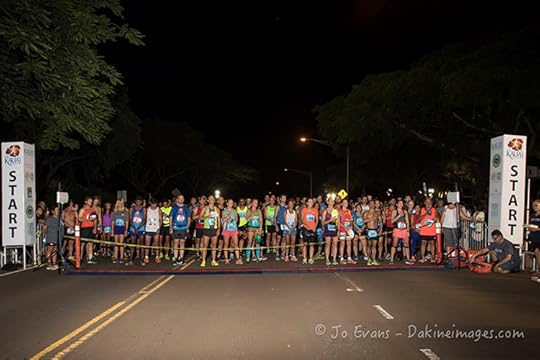
View Larger Image
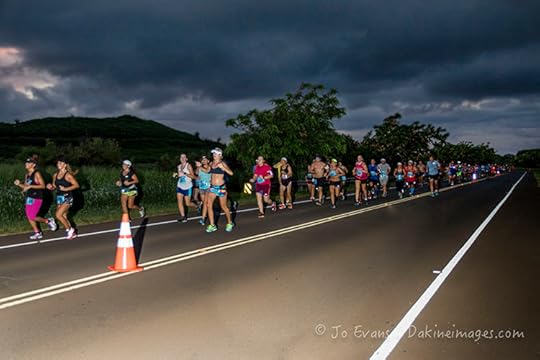
View Larger Image

View Larger Image

View Larger Image

View Larger Image

View Larger Image

View Larger Image

View Larger Image

View Larger Image

View Larger Image

View Larger Image
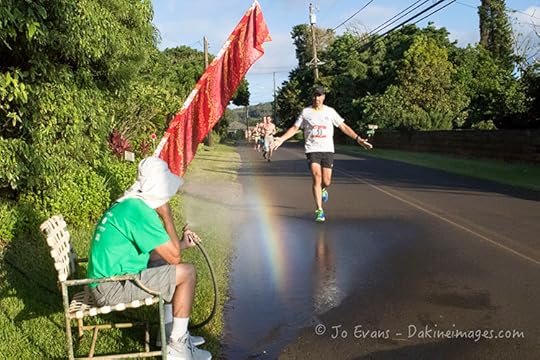
View Larger Image

View Larger Image

View Larger Image

View Larger Image
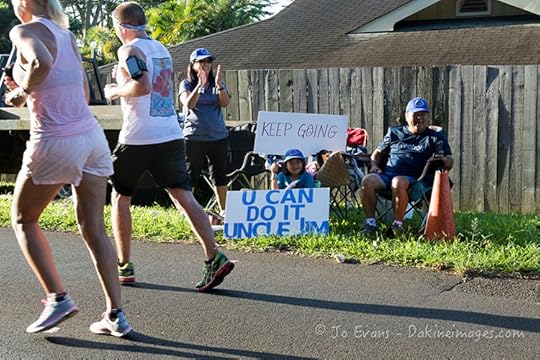
View Larger Image

Related Galleries

Photo Gallery: Virginia Beach Celebrates 15 Years of Rock ‘n’ Roll

Photo Gallery: Mile on the Sand

Photos: Thousands Take Part in Rock ‘n’ Roll Dublin Half Marathon

Participants hit the Pavement at Rock ‘n’ Roll Seattle Marathon & 1/2 Marathon

More Galleries
The post Photos: The 2015 Kauai Marathon and Half Marathon appeared first on Competitor.com.
How a Mile Race Can Help Boost Enthusiasm in Running
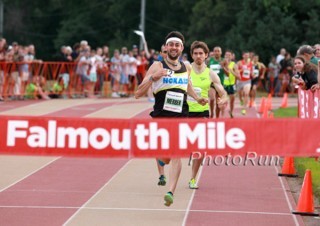
Kyle Merber, shown here winning the Falmouth Mile in 2014, believes the excitement of a competitive mile race can help stir interest in running. Photo: PhotoRun.net
I’m decidedly biased, but track and field is certainly one of the most exciting sports to watch—and specifically mid-distance to long-distance running races. Every event is entirely different, in its strategy, speed, drama and duration.
Unfortunately, not everyone thinks like me.
One of the problems with track and field’s identity crisis in America is that not enough people get a chance to see the thrilling drama of those events play out. There are more than 30 million people who run recreationally in the U.S., but most of those people—all but a tiny fraction—don’t have any knowledge or interest in the sport. (And yes, if your only experience has been waiting hours on end for your kid/sibling/nephew/niece to compete in a middle school or high school meet, I totally get it.)
Golf, basketball, football and baseball certainly don’t suffer from the same problem, so what can we do?
“Bring back the mile,” says Kyle Merber, a New Jersey-based professional runner, echoing the slogan of a grassroots group that has been trying to revive interest in running’s marquee race both at the professional and recreational level. There are too few top-tier track meets in the U.S., Merber says, and very few in the summer months when athletes are really starting to peak.
The 24-year-old Merber, who ran collegiately at Columbia University and the University of Texas and now trains with NJ*NY Track Club, owns a 3:54.76 personal best in the mile from a race he ran in Dublin, Ireland, last summer. Racing in Europe is great, but it’s expensive for young American runners to get over there and it doesn’t do much for the sport in the U.S.
But his own personal progression—he’s just one of just 448 American men in history to break the 4-minute mark—isn’t his primary motivation. He just wants to help captivate new runners (and new running fans) with the excitement of watching a mile race unfold. And while he’s proud of his sixth-place finish in the 1,500-meter run at this year’s U.S. track championships—and will be a contender to make the U.S. Olympic team in that event next year—the slightly longer mile race (roughly 1,609 meters) is much more compelling.
The mile is a relatively short but very fast race, one that almost always includes a mix of tactical strategy and all-out speed. Most competitive races have loads of drama that often reaches a crescendo down the final straightaway—no matter if the race is at the high school, collegiate, national or international level.
“Everybody understands the significance of running a sub-4-minute mile,” Merber says. “It’s always the benchmark of what people consider to be an elite mile. And everyone knows what a mile is, plus it’s the right amount of time that no one is getting bored watching and everyone is constantly on the edge of their seat.”
RELATED: Master The Mile—A One-Mile Training Plan for Recreational Runners
Merber isn’t just barking at the moon, though, he’s actually doing something about it. He’s the primary organizer behind the Hoka One One Long Island Mile on Sept. 9 at St. Anthony’s High School in Huntington Station, N.Y. The event will include several all-comers heats for recreational competitors and youth runners—plus a kids’ 400-meter race—followed by professional women’s and men’s races.
Merber, a Long Island native who won three New York state titles while in high school, is modeling the event off the Sir Walter Miler track meet held Aug. 10 in Raleigh, N.C. That event included a variety of pro, recreational and community races, plus live music, food truck cuisine and numerous breweries serving up their best low-alcohol beers. The morning after the race, there was a special trail run where local recreational runners could run with the pros.
That event was called the “best glimpse of future growth for American track” by Sports Illustrated, in an in-depth piece that was published just hours after the events completion. In a preview of the event, The Sporting News said the event is helping to “redefine fan-friendly track and field.” Unlike many track and field events, the Sir Walter Miler allowed fans to stand on the fourth lane of the track and all over the infield; creating a unique viewing experience and intense atmosphere, similar to a NASCAR race.
“That was a great event. There were a lot of people there, screaming and yelling,” Merber says. “It made you want to run fast, but it was also fun and created a lot of interest.”
RELATED: The Mile—America’s Classic Distance
The Long Island Mile will feature several up-and-coming American runners, including Merber, David Torrence, Garrett Heath, Riley Masters, Ford Palmer, Duncan Philips, Daniel Winn, Peter Callahan, Brandon Hudgins and Jack Bolas. Maybe you’ve never heard of them before, but they’ve all broken 4 minutes for the mile and, like Merber, are working their tails off to make the final of the 1,500 at next summer’s U.S. Olympic Trials. They’ll be gunning for the Long Island mile record of 3:53.0 as well as part of the nearly $12,000 prize purse. (Aside from Hoka, Merber found support from Brendan Barrett, owner of the Sayville Running Co. and Smithville Running Co. stores on Long Island.)
The women’s race will feature a stacked field as well, featuring Treniere Moser, Heather Kampf, Heather Wilson and Amanda Eccleston—American runners who have all broken 4:30 in the mile. (Read more about the Long Island Mile on Merber’s blog post.)
Merber, Winn, Palmer, Kampt and Moser will also run in the New York Road Runners’ 5th Avenue Mile on Sept. 13, a much higher profile road race that also features recreational and professional sections.
Is watching a mile race as exciting as a slam-dunk contest in basketball or a closest-to-the-pin contest in golf? It might be better and more lasting, Merber says. He’s designed the Long Island Mile to have an intimate experience with special touches such as thoughtful introductions of each runner, the chance to take pictures with the pros and the opportunity to run cooldown laps with the pros.
“I really want to create an opportunity for high school kids to experience what a professional meet is all about and have them cheer on the professional runners as they fly by them,” he says. “One of the biggest goals is to get the kids excited and be a little bit more motivated for their own running and this fall’s cross country season. We want to create an environment that is inspiring and gets people excited about track and field and running in general.”
RELATED: Bring Back the Mile!
The post How a Mile Race Can Help Boost Enthusiasm in Running appeared first on Competitor.com.
Suzy Favor Hamilton Memoir to Be Released Amid Media Blitz

Suzy Favor Hamilton, the record-setting, three-time Olympic middle-distance runner who made headlines in 2012 when it was revealed she was working as a high-priced escort in Las Vegas, is set to release a book this month detailing her double life.
Harper Collins announced that “Fast Girl: A Life Spent Running from Madness” is set to be released on Sept. 14. The 304-page book details Hamilton’s outstanding career, and her struggles with manic depression and bipolar disorder that caused her post-running life to spiral out of control. A massive media unveiling is planned next week with appearances scheduled for CNN, Today, Dr. Phil, 20/20 and others.
“It is the story of a how a supreme competitor scored her most important victory of all—reclaiming her life from the ravages of an untreated mental illness,” says a Harper Collins release about the book. “Today, thanks to diagnosis, therapy…Suzy is building a better life, one day at a time. Sharing her story, Suzy is determined to raise awareness, provide understanding, and offer inspiration to others coping with their own challenges.”
A 9-time NCAA champion while at the University of Wisconsin, Hamilton, 47, made the U.S. Olympic team in 1992, 1996 and 2000, competing in the 800m and 1,500m events. Although she was the top runner in the U.S. and competitive on the international circuit for years, she never won an Olympic medal.
The post Suzy Favor Hamilton Memoir to Be Released Amid Media Blitz appeared first on Competitor.com.
Paula Radcliffe ‘Categorically Denies’ Cheating After Doping Inquiry

Paula Radcliffe has three New York City Marathon titles to her credit. Photo: PhotoRun.net
In a 1,700-world statement released on her website Tuesday, marathon world-record holder Paula Radcliffe, who officially retired following April’s London Marathon, ‘categorically denied’ doping following implications from a Sunday Times’ article in early August that revealed an “extraordinary extent of cheating” in track & field. The Sunday Times, along with German broadcaster ARD/WDR, obtained the results of 12,000 blood tests from 5,000 athletes between 2001 and 2012 that showed an alarming number of “suspicious” blood values. Radcliffe was not named in the report although the database said “A top UK athlete is among seven Britons with suspicious blood scores.”
In addition, a parliamentary select committee member suggested that London Marathon winners and medallists and “potentially British athletes” were under suspicion, according to the BBC.
Radcliffe ran her still-standing world record of 2:15:25 at the 2003 London Marathon. She owns the three fastest times in history and is the only woman ever to break 2:18 in the marathon. Kenyan Mary Keitany’s 2:18:37, run at the 2012 London Marathon, is the fourth fastest time ever run behind Radliffe’s best three marks—2:15:25, 2:17:18 (Chicago, 2002) and 2:17:42 (London, 2005).
RELATED: Radcliffe Wary About Releasing Blood Data
“I categorically deny that I have resorted to cheating in any form whatsoever at any time in my career, and am devastated that my name has even been linked to these wide-ranging accusations,” Radcliffe said in her statement. “I have campaigned long and hard throughout my career for a clean sport. I have publicly condemned cheats and those who aid them. These accusations threaten to undermine all I have stood and competed for, as well as my hard earned reputation.”
The 41-year-old Radcliffe, who has remained one of track & field’s strongest anti-doping voices despite numerous suspicions and accusations over the years, has never failed a blood test. Last month, Radcliffe told BBC sports editor Dan Roan that athletes shouldn’t reveal their blood data because it can be easily misunderstood and misinterpreted by non-experts. In her statement on Tuesday, she went to great lengths to explain three ‘abnormal’ readings referred to by the Sunday Times, and also pointed out that “not one of the values questioned by the Sunday Times occurred around any of my best performances or races, including all my appearances at the London Marathon.”
“In all of these three cases referred to by the Sunday Times (as well as on many more occasions) I was EPO urine tested at the time, and also in follow up,” Radcliffe wrote. “All of these three cases followed periods of altitude training. Only one of my blood test scores is marginally above the 1 in 100 accepted threshold, and this is invalid given that it was collected immediately following a half marathon race run around midday in temperatures of approximately 30C. None of my blood test scores are anywhere near the 1 in 1000 threshold as was claimed by the Sunday Times and that which is seen as suspicion of doping. No abnormalities were ultimately found and any allegation that the IAAF did not follow up on blood data results in my case is false.”
The post Paula Radcliffe ‘Categorically Denies’ Cheating After Doping Inquiry appeared first on Competitor.com.
Striking the Balance
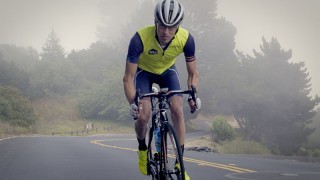
Episode three of GU TV features pro cyclist Yuri Hauswald, winner of the 2015 Dirty Kanza 200 gravel-cycling race, interviewing endurance athlete and GU CEO Brian Vaughan about how to strike a balance between training, family, and career.
The post Striking the Balance appeared first on Competitor.com.
Strength Training for Runners: Squat-Thrust Climbers
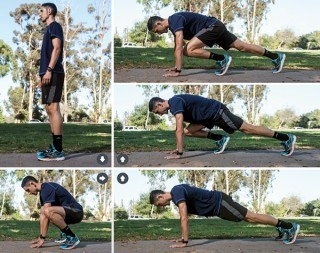
Photo: Scott Draper
No matter if you’re on a rocky trail or a smooth paved road, balance is a critical element to running healthy. The next time you are negotiating a challenging section of trail or trying to make a sudden move in a road race, think about the amount of vertical and lateral movement your body is undergoing in order to stay upright.
Dr. Richard Hansen of High Altitude Spine and Sport in Boulder, Colo., recommends incorporating squat-thrust climbers into your strength-training routine. “It trains core stability, balance and proprioception, and lower body power,” he says.
How To Do It:
Step 1: Stand tall with feet approximately shoulder-width apart.
Step 2: Squat at the hips and place your hands on the ground in front of you.
Step 3: Jump backward into a pushup position. “Don’t allow the hips and lower back to arch or dip,” Hansen says. “You want the torso to remain in a neutral position.”
Step 4: Drive one knee forward then back followed by the other knee (“mountain climber” position).
Step 5: Jump forward into squat position. Bend with the hips—not the torso.
Step 6: Jump straight up and land flat footed. Reset your position prior to starting the next repetition.
Begin with 2 sets of 5 repetitions each. Recover for 60 seconds between sets. Increase to 3 sets of 8 reps each as your strength and coordination improve. Focus on executing the exercise with good form over completing as many reps as possible.
RELATED:
— 3 Bodyweight Workout Routines for Runners
— Strength Training for Runners: Box Jumps
The post Strength Training for Runners: Squat-Thrust Climbers appeared first on Competitor.com.
Ryan Hall's Blog
- Ryan Hall's profile
- 21 followers



